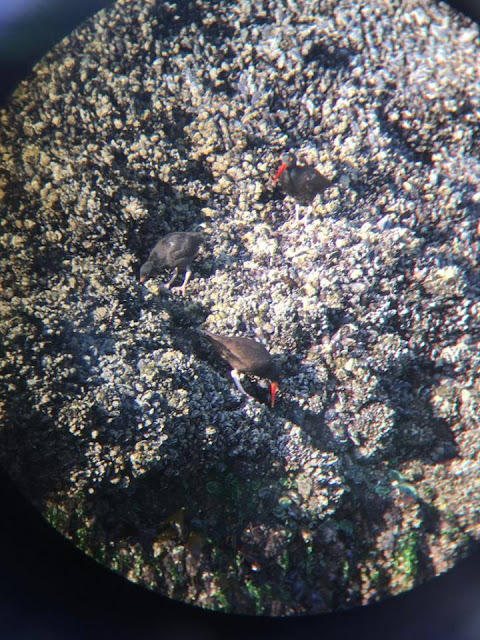If you’ve been following HRAP on Facebook and Instagram, you know that we first sighted puffins at Haystack Rock on April 3! Since then, the weather has often been challenging for puffin-spotting (and everything else!) with wind, rain, high surf, and surging waves. Nonetheless, we’ve seen 10-16 puffins on many days, and more on a few calmer days. Calm mornings at low tide are the best times to come down to try to spot them. Other than puffins, our usual cast of bird characters – including murres, guillemots, cormorants, black oystercatchers, harlequin ducks, Canada geese, and bald eagles – has been a reliable presence. In the tidepools we’ve seen many opalescent nudibranchs, aggregating and moon glow anemones, a few ochre sea stars, and a leather sea star too. As the weather improves, there will be more opportunities to see the amazing wildlife that lives, feeds, nests, and hunts at Haystack Rock. We are looking forward to it and hope you'll come to visit! ...







